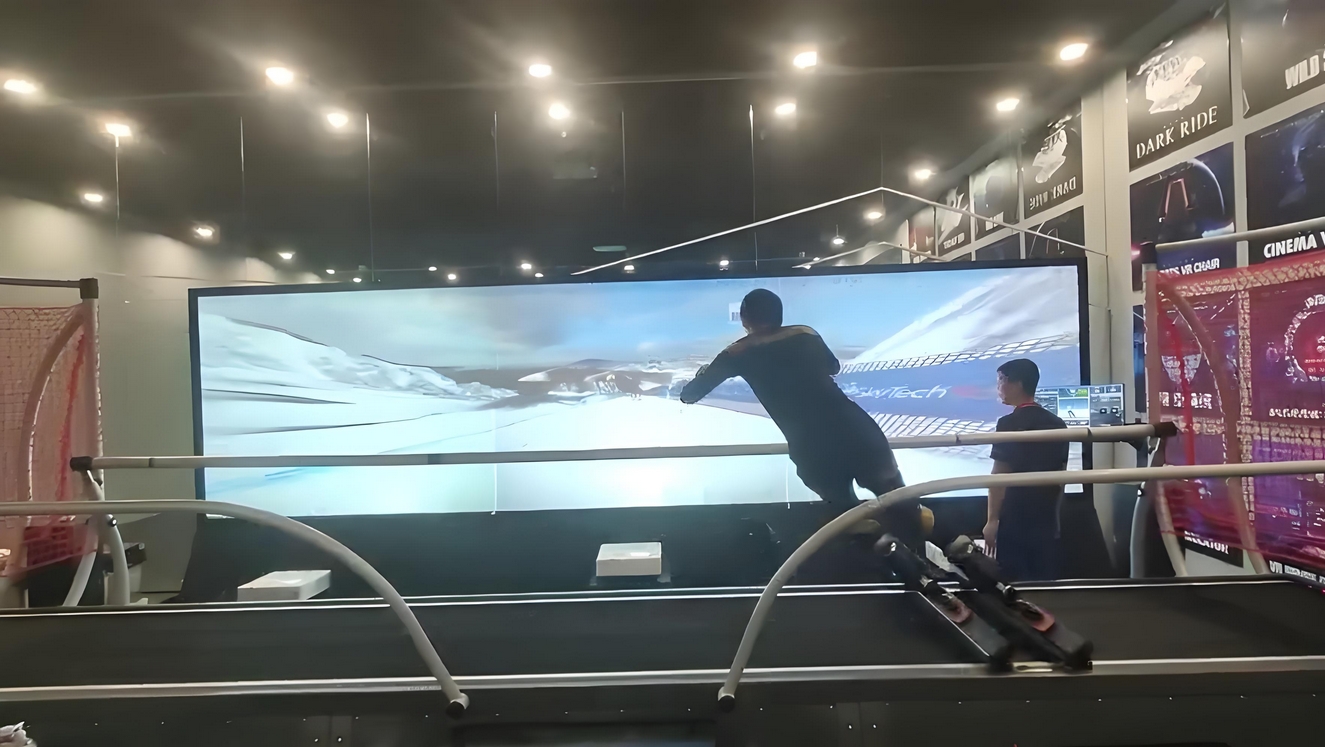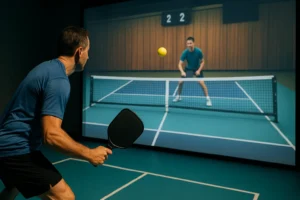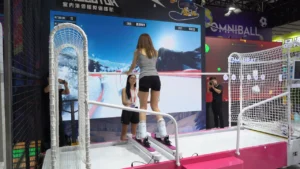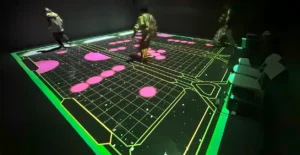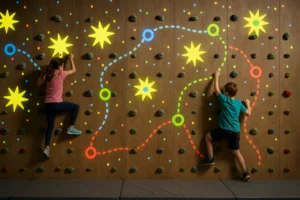What is an Indoor Interactive Ski Simulator?
Indoor interactive ski simulators are advanced workout machines that emulate the experience of skiing using a combination of physical motion and AR. Unlike traditional exercise equipment, these simulators incorporate elements of virtual reality, creating an immersive environment where users can “ski” through various terrains and challenges.
Key Features:
- AR Integration: AR adds a layer of digital elements, making the user feel like they’re actually on a snowy mountain.
- Realistic Movements: These simulators allow for side-to-side motion, mimicking real skiing techniques.
- Customization Options: Most systems let users adjust the difficulty and terrain to suit their skill level, from beginner to advanced.
By combining the thrill of skiing with the comfort of indoor settings, these simulators redefine what a home workout can be. They’re suitable for all ages and fitness levels, making them a versatile choice for any household.
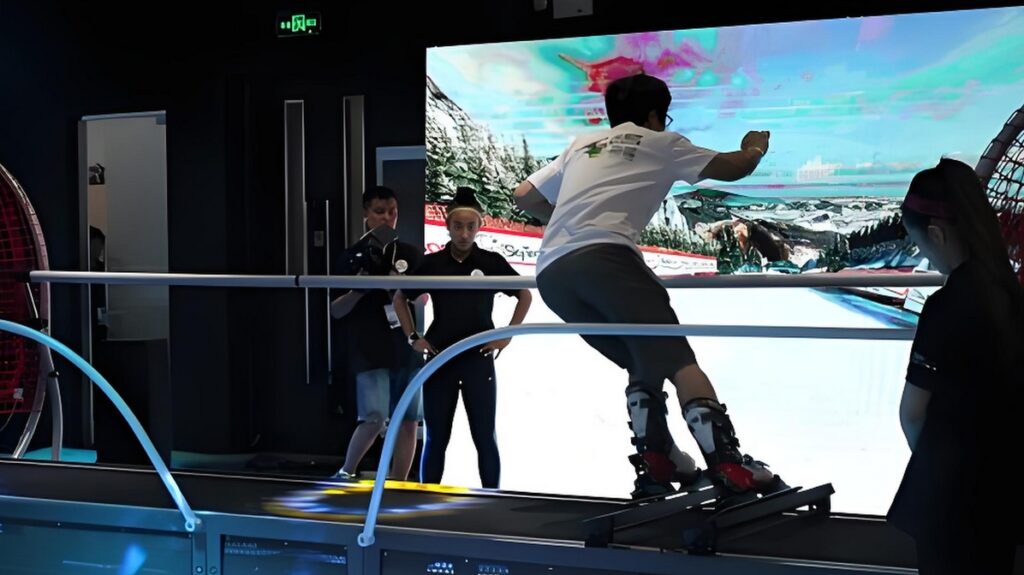
Why Are AR Ski Simulators the Hottest New Fitness Trend?
With fitness becoming more digital, AR-integrated ski simulators are hitting the top of the fitness charts. This tech-savvy approach to exercise appeals to both tech enthusiasts and fitness buffs looking for something more engaging than traditional workouts.
Reasons for Popularity:
- Immersive Experience: AR fitness equipment like the Hottest AR Fitness Interactive Ski Simulator Game transports users to various ski slopes, offering a real-world skiing feel.
- Full-Body Workout: Ski simulators engage multiple muscle groups, providing both cardio and strength training.
- Home Convenience: You can experience an entire ski workout without leaving your house, making it perfect for people with busy schedules or those living in urban areas.
As more people turn to home-based fitness, this innovative approach offers an exciting alternative. The integration of AR and interactive technology is not just trendy; it’s a revolutionary way to stay fit.
How to Install an Indoor Interactive Ski Simulator
Installing a ski simulator at home may sound complicated, but with the right guidance, it’s fairly straightforward. Here’s what you need to know to get your simulator up and running.
Choosing the Right Space
First things first, decide on the room where you’ll set up the simulator. Ideally, you want a space that offers ample room for movement. Most simulators don’t require a large area, but a designated corner in a living room, basement, or home gym works best.
Installation Steps
- Unbox the Simulator: Follow the manufacturer’s instructions carefully. All parts should be in the package, but double-check to avoid missing pieces.
- Connect to Power & Wi-Fi: Many simulators require power connections and internet access to run software updates or stream AR content.
- Configure the AR System: Setting up the AR components may involve syncing the system with a smartphone or tablet. Some setups come with dedicated screens for added immersion.
- Calibrate for Motion: To get the best results, follow calibration steps, which typically involve adjusting the sensors for height, weight, and skiing intensity.
You don’t need a professional to install most simulators, but for larger or complex models, you might consider hiring an expert.
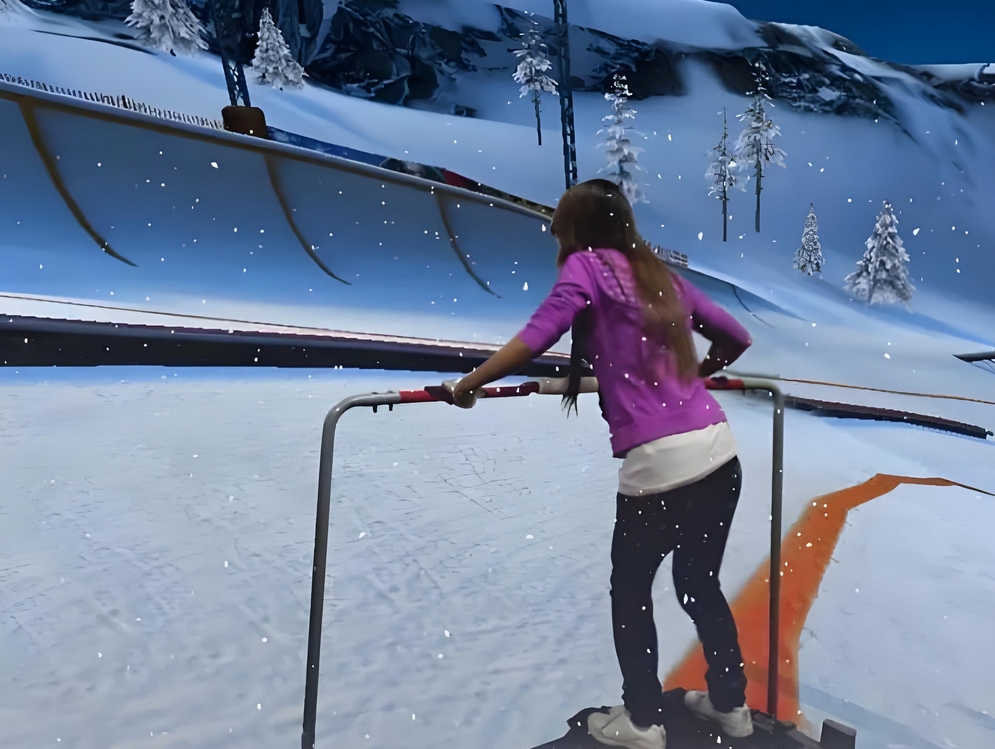
Immersive Ski Sports Simulator Experience for Any Room
One of the most impressive aspects of an interactive ski simulator is how it transforms an ordinary room into a ski resort. Using cutting-edge technology, these systems project lifelike snow-covered landscapes, mountains, and trails.
Benefits of Immersive Experiences:
- Enhanced Engagement: Visuals and sounds mimic real ski environments, enhancing the user’s focus and motivation.
- Skill Improvement: Practicing skiing techniques indoors with a realistic simulator can help improve balance, coordination, and agility.
- Safe Learning Environment: For beginners, the simulator offers a safe place to practice without the risk of injury associated with actual slopes.
Imagine skiing down an Alpine mountain without worrying about cold temperatures, lift tickets, or travel expenses. It’s a game-changer for both recreational skiers and fitness enthusiasts alike.
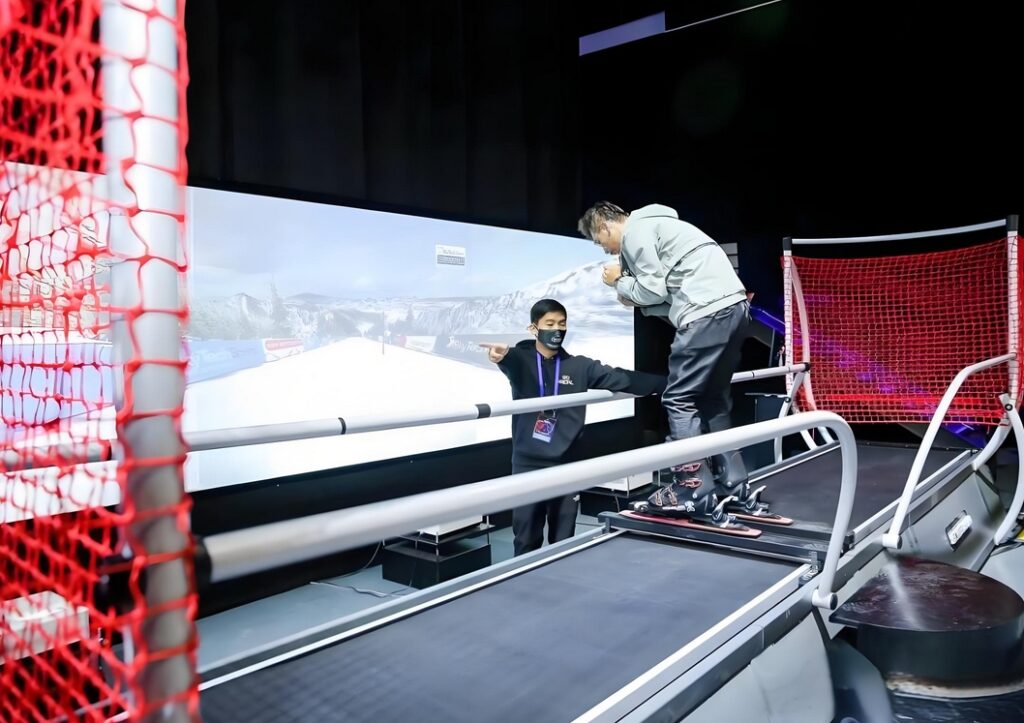
Why Ski Sports Trainer Interactive Technology is a Game-Changer
The technology behind these ski simulators is nothing short of remarkable. By blending elements of AI, AR, and responsive software, these machines adapt to the user’s movements and provide instant feedback on performance.
Tech Highlights:
- Responsive Software: The simulator’s software tracks your motions, adjusting the experience based on your skill level and fitness goals.
- Real-Time Feedback: Users can get data on their speed, calories burned, distance “skied,” and even technique improvements.
- Training Programs: Many simulators come with pre-set training programs designed to build endurance, strength, or agility over time.
For anyone looking to improve their skiing skills, the ski sports trainer technology is incredibly effective. It’s like having a personal ski coach who’s available 24/7 in your own home.
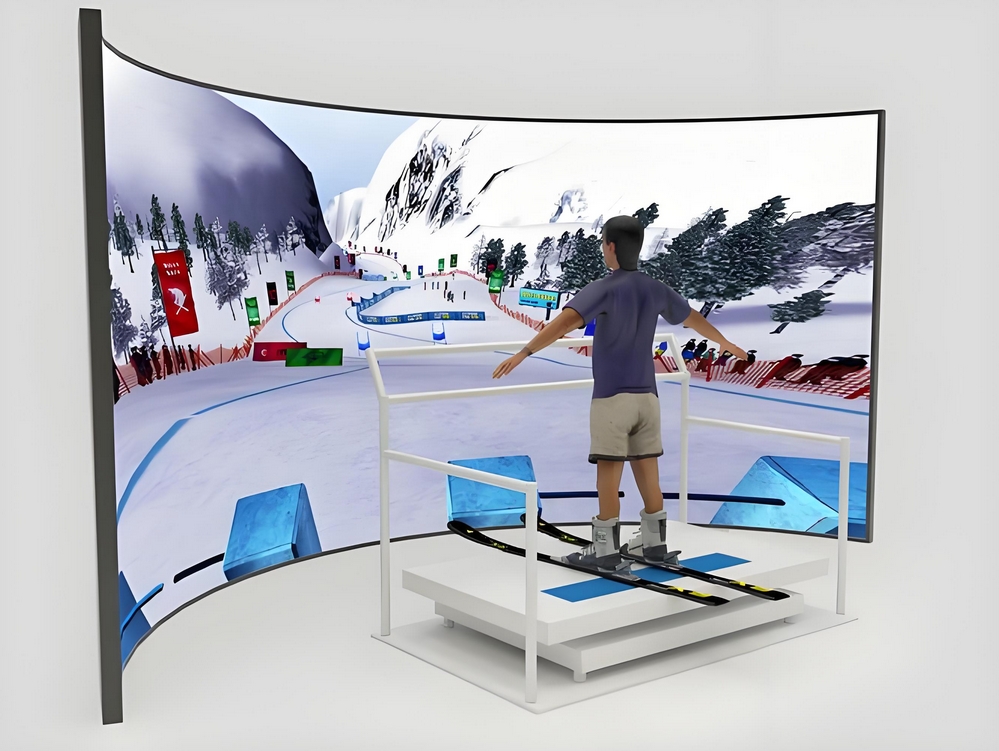
How Much Does an Indoor Ski Simulator Cost and Where to Buy?
With such advanced features, you may wonder about the price of these simulators. Prices vary widely depending on the model, features, and manufacturer.
Estimated Prices:
- Basic Models: Starting around $2,000 – $5,000, these offer core features but may have limited AR functionality.
- Mid-Range Models: Ranging from $5,000 – $10,000, these models often come with advanced AR features, better sensors, and a more immersive setup.
- Premium Models: $10,000 and above, featuring the latest technology, high-end displays, and customizable options.
Yes, most indoor ski simulators have settings to accommodate all skill levels, from beginners to advanced skiers. You can start with easier terrains and gradually increase the difficulty as you improve.
Not necessarily. While some simulators come with AR glasses for enhanced immersion, many use screens or projectors that deliver a similar effect.
Generally, a space of about 10 feet by 10 feet is ideal for most simulators, though some compact models may need less room.

